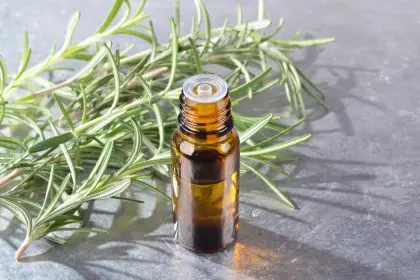Nail fungus, also known as onychomycosis, is a common infection that affects fingernails and toenails. While it may seem like a minor cosmetic concern, nail fungus can significantly impact hand health. This article explores the dangers of nail fungus and how it can wreak havoc on your hands, along with effective treatment options and preventative measures.
Beyond Appearance: Understanding the Risks of Nail Fungus
Nail fungus thrives in warm, moist environments and can spread easily through contact with contaminated surfaces or infected individuals. While the initial signs might be discolored or thickened nails, leaving it untreated can lead to serious complications:
- Pain and Discomfort: The fungus grows under the nail plate, which can cause pain and discomfort, especially when pressure is applied to the affected fingernail.
- Difficulty with Daily Tasks: Thickened, crumbling nails can make it difficult to perform everyday tasks like buttoning clothing, typing, or opening jars.
- Secondary Infections: Cracked or damaged nails caused by fungus can create entry points for bacteria, leading to secondary infections in the surrounding skin.
- Social Embarrassment: Discolored and unhealthy-looking nails can cause social embarrassment and impact self-esteem.
Risk Factors: Who’s Most Susceptible to Nail Fungus?
Anyone can develop nail fungus, but certain factors increase your susceptibility:
- Age: The risk of nail fungus increases with age as nails become thinner and more brittle.
- Medical Conditions: People with diabetes, weakened immune systems, or circulatory problems are more prone to fungal infections.
- Moist Environments: Frequently sweating hands, wearing occlusive gloves for extended periods, or living in a humid climate can contribute to nail fungus growth.
- Foot Fungus (Tinea Pedis): Having an athlete’s foot (tinea pedis) increases the risk of spreading the fungus to your fingernails.
- Nail Injuries: Damage to the nail plate can create an entry point for fungal spores.
Combating the Threat: Effective Treatment Options for Nail Fungus
Nail fungus can be stubborn and requires persistent treatment. Here are some common treatment options:
- Antifungal Medications: Topical antifungal creams or lacquers are applied directly to the infected nail. In severe cases, oral antifungal medications might be prescribed. Treatment can take months, and consistent application is crucial for success.
- Laser Treatment: Laser therapy uses concentrated beams of light to kill the fungus. While generally safe and effective, it may require multiple sessions and might not be covered by insurance.
- Nail Debridement: In severe cases, a podiatrist or dermatologist may remove part or all of the infected nail to facilitate treatment with topical medications.
- Home Remedies: While not a definitive cure, some home remedies like vinegar soaks or tea tree oil may offer mild relief and help prevent the spread of infection. However, it’s important to consult a doctor before trying any home remedies.
Prevention is Key: Protecting Your Hands from Nail Fungus
Preventing nail fungus infection is easier than treating it. Here are some effective preventative measures:
- Maintain Dry Hands: Wash your hands frequently with soap and water, and dry them thoroughly, especially between the fingers.
- Wear Breathable Footwear: Opt for shoes and socks made from breathable materials like cotton to prevent moisture buildup.
- Don’t Share Personal Items: Avoid sharing nail clippers, towels, or shoes with others to prevent the spread of fungus.
- Disinfect Public Areas: Wear shower shoes in public locker rooms and pools to minimize contact with potentially contaminated surfaces.
- Inspect Your Nails Regularly: Pay attention to any changes in the appearance of your nails, such as discoloration, thickening, or brittleness. Early detection and treatment can prevent complications.
Seeking Professional Help: When to See a Doctor
If you suspect you have nail fungus, consult a doctor or dermatologist for proper diagnosis and treatment. Early intervention is crucial to prevent complications and ensure a successful recovery. They can recommend the most appropriate treatment plan based on the severity of the infection and your overall health.
Healthy Hands, Healthy You: Taking Control of Nail Fungus
Nail fungus, while seemingly minor, can significantly impact your hand health and quality of life. By understanding the risks, recognizing the symptoms, and taking preventative measures, you can minimize your chances of developing this infection. If you notice signs of nail fungus, don’t hesitate to seek professional help from a doctor or dermatologist. With proper treatment and preventative measures, you can restore the health and beauty of your hands and maintain strong, healthy fingernails.
This story was created using AI technology.
















